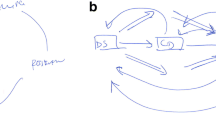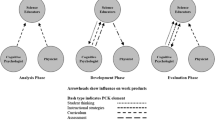Abstract
The ability of novice instructional designers to become skilled problem-solvers, who select and apply appropriate instructional design (ID) models in their work environments, are key competencies generally sought after in introductory ID courses. Yet, the proliferation of ID models, coupled with varied philosophies and practices about how ID is taught may pose challenges for ID educators seeking to prepare the next generation of leaders in the field. With little empirical research or documented best practices, ID educators are left to their own judgment about to how to navigate the practical challenges that can arise in the pursuit of their teaching goals. This paper shares insights on how ID educators across institutions teach introductory ID under varied conditions, and how ID educators can support each other in addressing challenges faced by those teaching introductory ID and seeking to improve their own practice. Using action research methods, we engaged in cross-institutional collaboration, sharing teaching approaches, philosophies, modes of delivery, instructional strategies, resources, models, and products of instructional design with each other as a means to understand and improve our own teaching practices. We also developed a model for cross-institutional faculty collaboration that is immersive, cyclical, and theory-based, and provides a guide for other ID educators to collectively engage in the work of supporting each other in the common goal of preparing the next generation of instructional design leaders.

Similar content being viewed by others
References
Andrews, D. H. (1995). A comparative analysis of models of instructional design. In G. Anglin (Ed.), Instructional technology: Past, present and future (2nd ed., pp. 161–182). Englewood, CO: Libraries Unlimited Inc.
Atkinson, T., & Hirumi, A. (2010). The game brain: What does the brain tell us about playing games in schools? In A. Hirumi (Ed.), Playing games in school: using simulations and videogames for primary and secondary education (pp. 57–73). Eugene, WA: International Society for Technology in Education.
Borkin, M. A., Vo, A. A., Bylinskii, Z., Isola, P., Sunkavalli, S., Oliva, A., et al. (2013). What makes a visualization memorable? IEEE Transactions on Visualization and Computer Graphics, 19(12), 2306–2315.
Botturi, L. (2006). Design models as emergent features: An empirical study in communication and shared mental models in instruction. Canadian Journal of Learning and Technology, 32(2), 27–52.
Brown, A. H., & Green, T. D. (2016). The essentials of instructional design: Connecting fundamental principles with process and practice. New York, NY: Routledge.
Cennamo, K. (2016). What is studio? In E. Boling, R. A. Schwier, C. M. Gray, K. M. Smith, & K. Campbell (Eds.), Studio teaching in higher education: Selected design cases (pp. 248–259). New York, NY: Routledge.
Clark, R. E. (2004). Design document for a guided experiential learning course. Submitted to satisfy contract DAAD 19-99-D-0046-0004 from TRADOC to the Institute for Creative Technologies and the Rossier School of Education, University of Southern California.
Clinton, G., & Rieber, L. P. (2010). The studio experience at the University of Georgia: An example of constructionist learning for adults. Educational Technology Research and Development, 58(6), 755–780.
Colder, B. (2011). Emulation as an integrating principle for cognition. Frontiers in Computational Neuroscience, 5, 54.
Cox, S., & Osguthorpe, R. T. (2003). How do instructional design professionals spend their time? TechTrends, 47(3), 45–47.
Critchfield, T. S., & Twyman, J. S. (2014). Prospective instructional design: Establishing conditions for emergent learning. Journal of Cognitive Education and Psychology, 13(2), 201–217. https://doi.org/10.1891/1945-8959.13.2.201.
Dick, W., Carey, L., & Carey, J. O. (2015). The systematic design of instruction (8th ed.). Boston, MA: Pearson.
Dingsøyr, T., & Moe, N. B. (2014). Towards Principles of Large-Scale Agile Development: A Summary of the workshop at XP2014 and a revised research agenda Agile Methods: Large-scale development, refactoring, testing, and estimation: XP 2014 International Workshops Rome, Italy, Revised Selected Papers. Retrieved from https://www.researchgate.net/publication/269706735_Towards_Principles_of_Large-Scale_Agile_Development_A_Summary_of_the_workshop_at_XP2014_and_a_revised_research_agenda.
Dirksen, J. (2016). Design for how people learn (2nd ed.). New York, NY: New Riders.
Dunne, J. (1993). Back to the rough ground: ‘Phronesis’ and ‘techne’ in modern philosophy and in Aristotle. Notre Dame, IN: University of Notre Dame Press.
Edmonds, G. S., Branch, R. C., & Mukherjee, P. (1994). A conceptual framework for comparing instructional design models. Educational Technology Research and Development, 42(4), 55–72.
Frishberg, L., & Lambdin, C. (2015). Presumptive design: Design provocations for innovation. Waltman, MA: Morgan Kaufmann. https://doi.org/10.1016/B978-0-12-803086-8.00017-X.
Gagné, R. (1987). Instructional technology foundations. Hillsdale, NJ: Lawrence Erlbaum.
Gibbons, A. S. (2013). An architectural approach to instructional design. New York, NY: Routledge.
Gibbons, A. S. (2016). Evolving into studio. In E. Boling, R. A. Schwier, C. M. Gray, K. M. Smith, & K. Campbell (Eds.), Studio teaching in higher education: Selected design cases (pp. 137–151). New York, NY: Routledge.
Gustafson, K. L., & Branch, R. M. (2002). Survey of instructional development models (4th ed.). Syracuse, NY: Eric Clearinghouse on Information and Technology.
Hirumi, A. (2002a). A framework for analyzing, designing and sequencing planned e-learning interactions. Quarterly Review of Distance Education, 3(2), 141–160.
Hirumi, A. (2002b). The design and sequencing of e-learning interactions: A grounded approach. International Journal on E-Learning, 1(1), 19–27.
Hirumi, A. (2013). Three levels of planned e-learning interactions: A framework for grounding research and the design of e-learning programs. Quarterly Review of Distance Education, 14(1), 1–16.
Hirumi, A. (Ed.). (2014a). Grounded designs for online and hybrid learning: Practical guidelines for educators and instructional designers. Book I—Design fundamentals. Eugene, WA: International Society for Technology in Education.
Hirumi, A. (Ed.). (2014b). Grounded designs for online and hybrid learning: Practical guidelines for educators and instructional designers. Book II—Designs in action. Eugene, WA: International Society for Technology in Education.
Hirumi, A., Johnson, K., Kleinsmith, A., Reyes, R., Rivera-Gutierrez, D., Kubovec, S., et al. (2017a). Advancing virtual patient simulations and experiential learning with InterPLAY: Examining how theory informs design and design informs theory. Journal of Applied Instructional Design, 6(1), 49–65. https://doi.org/10.28990/jaid2017.061005.
Hirumi, A., Lok, B., Johnson, T., Johnson, K., Rivera-Gutierrez, D., Ramsamooj, R., et al. (2017b). Nerve, interplay, and design-based research: Advancing experiential learning and the design of virtual patient simulations. In J. M. Spector, B. B. Lockee, & M. D. Childress (Eds.), Learning, design, and technology: An interactional compendium of theory, research, practice, and policy. New York, NY: Springer. https://doi.org/10.1007/978-3-319-17727-4_76-1.
Larson, M. B., & Lockee, B. B. (2009). Preparing instructional designers for different career environments: A case study. Educational Technology Research and Development, 57(1), 1–24.
Lave, J., & Wenger, E. (1991). Situated learning: Legitimate peripheral participation. Cambridge, UK: Cambridge University Press.
Lindsey, L., & Berger, N. (2009). Experiential approach to instruction. In C. Reigeluth & A. Carr-Chellman (Eds.), Instructional-design theories and models. Building a common knowledge base (Vol. 3, pp. 117–142). New York, NY: Routledge.
McAfee, A., & Brynjolfsson, E. (2012). Big data’s management revolution. Retrieved from https://hbr.org/2012/09/big-datas-management-revolutio.
McDonald, J. K. (2016). Embracing the danger: Accepting the implications of innovation. Educational Technology, 56(6), 14–17.
Meisenbach, R. J., & Jensen, P. R. (2017). Bureaucratic theory: The international encyclopedia of organizational communication (pp.1–13). Hoboken, NJ: Wiley & Sons Inc. https://doi.org/10.1002/9781118955567.wbieoc014.
Merriam, S. B., & Tisdell, E. J. (2016). Qualitative research: A guide to design and implementation (4th ed.). San Francisco, CA: Jossey-Bass.
Merriënboer, J., Clark, R. E., & Croock, M. (2002). Blueprints for complex learning: The 4C/ID-model. Educational Technology Research and Development, 50(2), 39–64.
Nelson, H. G., & Stolterman, E. (2012). The design way: Intentional change in an unpredictable world. Cambridge, MA: MIT Press.
Quinn, J. (1994). Connecting education and practice in an instructional design graduate program. Educational Technology Research and Development, 42(3), 71–82.
Rich, P. J., West, R. E., & Warr, M. (2015). Innovating how we teach collaborative design through studio-based pedagogy. In M. A. Orey & R. M. Branch (Eds.), Educational media and technology yearbook (Vol. 39, pp. 147–163). Switzerland: Springer International Publishing.
Salama, A. M. (1995). New trends in architectural education: Designing the design studio. Raleigh, NC: Tailored Text & Unlimited Potential Publishing.
Schön, D. A. (1985). The design studio: An exploration of its traditions and potentials. London, England: RIBA Publications Limited.
Shambaugh, N., & Magliaro, S. (2001). A reflexive model for teaching instructional design. Educational Technology Research and Development, 49(2), 69–92.
Slagter van Tryon, P. J., & Bishop, M. J. (2006). Identifying e-mmediacy strategies for web-based instruction: A delphi study. Quarterly Review of Distance Education, 7(1), 49–62.
Slagter van Tryon, P. J., & Bishop, M. J. (2009). Theoretical foundations for enhancing social connectedness in online learning environments. Distance Education, 30(3), 291–315.
Stake, R. E. (1995). The art of case study research. Thousand Oaks, CA: Sage Publications.
Sugar, W., Hoard, B., Brown, A., & Daniels, L. (2012). Identifying multimedia production competencies and skills of instructional design and technology professionals: An Analysis of recent job postings. Journal of Educational Technology Systems, 40(3), 227–249.
van Rooij, S. W. (2010). Project management in instructional design: ADDIE is not enough. British Journal of Educational Technology, 41(5), 852–864.
Wenger, E. (1998). Communities of practice: Learning, meaning, and identity. New York, NY: Cambridge University Press.
Winn, W. (1997). Advantages of a theory-based curriculum in instructional technology. Educational Technology, 37(1), 34–41.
Woo, K., Gosper, M., McNeill, M., Preston, G., Green, D., & Phillips, R. (2008). Web-based lecture technologies: blurring the boundaries between face-to-face and distance learning. Research in Learning Technology. https://doi.org/10.3402/rlt.v16i2.10887.
Yanchar, S. C., South, J. B., Williams, D. D., Allen, S., & Wilson, B. G. (2010). Struggling with theory? A qualitative investigation of conceptual tool use in instructional design. Educational Technology Research and Development, 58(1), 39–60. https://doi.org/10.1007/s11423-009-9129-6.
Young, A. C., Reiser, R. A., & Dick, W. (1998). Do superior teachers employ systematic instructional planning procedures? A descriptive study. Educational Technology Research and Development, 46(2), 65–78.
Author information
Authors and Affiliations
Corresponding author
Rights and permissions
About this article
Cite this article
Slagter van Tryon, P.J., McDonald, J. & Hirumi, A. Preparing the next generation of instructional designers: a cross-institution faculty collaboration. J Comput High Educ 30, 125–153 (2018). https://doi.org/10.1007/s12528-018-9167-3
Published:
Issue Date:
DOI: https://doi.org/10.1007/s12528-018-9167-3




